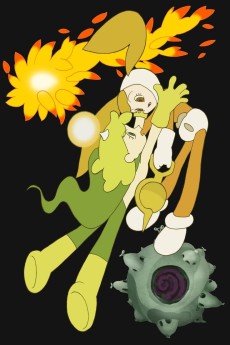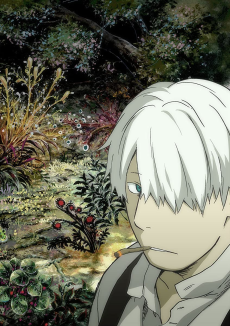SHOUJO SHUUMATSU RYOKOU
STATUS
COMPLETE
EPISODES
12
RELEASE
December 22, 2017
LENGTH
24 min
DESCRIPTION
Civilization is dead, but Chito and Yuuri are still alive. So they hop aboard their beloved Kettenkrad motorbike and aimlessly wander the ruins of the world they once knew. Day after hopeless day, they look for their next meal and fuel for their ride. But as long as the two are together, even an existence as bleak as theirs has a ray or two of sunshine in it, whether they're sucking down their fill of soup or hunting for machine parts to tinker with. For two girls in a world full of nothing, the experiences and feelings the two share give them something to live for…
(Source: Yen Press)
CAST
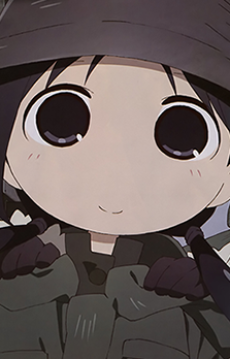
Chito

Inori Minase

Yuuri

Yurika Kubo

Nuko

Kana Hanazawa

Ishii

Kotono Mitsuishi
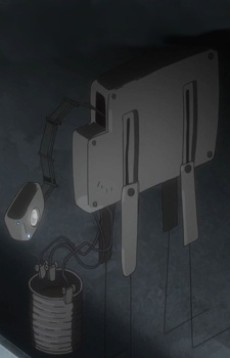
Jiritsu Kikai

Yuuki Kaji
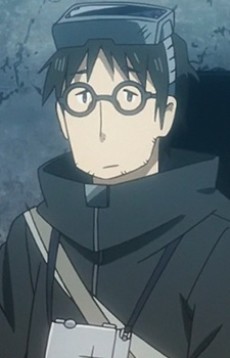
Kanazawa

Akira Ishida
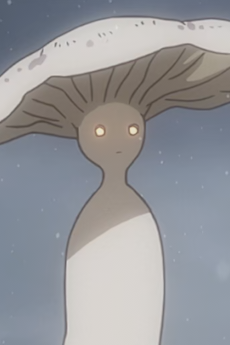
Eringi

Sumi Shimamoto
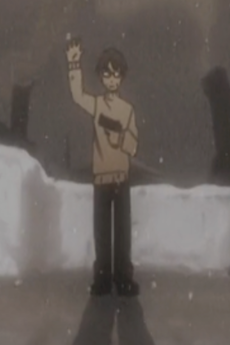
Ojii-san

Motomu Kiyokawa
EPISODES
Dubbed

Not available on crunchyroll
RELATED TO SHOUJO SHUUMATSU RYOKOU
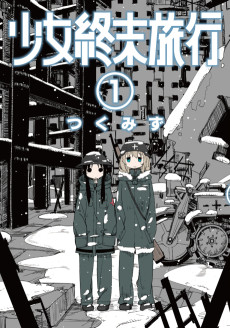 MANGA AdventureShoujo Shuumatsu Ryokou
MANGA AdventureShoujo Shuumatsu Ryokou ONA ComedyShoujo Shuumatsu Jugyou
ONA ComedyShoujo Shuumatsu JugyouREVIEWS

planetJane
87/100A masterful eulogy for humanity itself, via the medium of two girls in a mini-tank.Continue on AniListSpoilers Below.
Anime that deal with the decline of humanity are rather rare, and when they exist, the human race usually goes out in spectacular fashion. A go-down-swinging approach, if you will. Girls' Last Tour though, is an iyashikei, which puts it in rare company indeed, alongside just a handful of other properties, most of which never made it outside of the manga format. Were it interesting only on the basis of its genre rarity GLT would be merely vaguely interesting, but it combines its subject matter with its genre in some thought-provoking and at times genuinely surprising ways.
While the older Record of Yokohama Shopping Trip--one of GLT's few peers in its peculiar genre/subject matter intersection--often emphasized a world of technology being slowly reclaimed by nature Girls' Last Tour takes the opposite tack, a technological megalopolis that seems to have subsumed all nature entirely (in the third episode when the girls encounter a dead fish, Yuu has no idea what it is, and Chi is only passingly familiar), yet fallen into ruin regardless. Another example of this is the fourth episode. The temple the two stumble upon that lights up the city is filled with artificial plants, namely lilypads, which rest on a glass floor filled with metal fish sculptures, all meant to resemble a giant koi pond, but actual organic life is nowhere to be found. When the girls finally do come across a living organic being (another fish) much later in the series, there is only one, quite possibly the literal last fish on earth, and it is attended to by a squarish robot, and a strange mammalian creature they encounter later turns out to be biomechanical. There's a fair bit of BLAME! (a much more violent post-apoc anime) in its set design. Yawning chasms, broken and sometimes colossal machines, and weird architecture give GLT's world a touch of disconnectedness from our own reality, and really they're just damn impressive to look at.
Around episode 6 is when the show genuinely comes into its own. Iyashikei as a genre has always been hard to define but the episode (called "Takeoff") is a masterclass on what sets the genre apart from similar but more conventionally narrative types of media. Chi and Yuu become lost in a sort of desert-like area where metal poles protrude from the ground, and the Kettenkrad breaks down, leaving Chi unable to repair it. Here, they meet Ishii, a woman who lives in an abandoned airbase and seeks to build a plane to leave their massive city. They help her and in turn she fixes the Kettenkrad. Much of the episode is spent on the interaction between Yuu and Chi, and when the time finally comes for the plane to take off, a long, genuinely goosebump-inducing flight sequence (with a beautiful soundtrack that almost reminds one of Enya's "Orinoco Flow") is dashed when the plane begins to crumble in mid-air, not a minute after taking off. Ishii survives--our protagonists watch her parachute safely to the first level of the city below--but crucially all of this, the Kettenkrad being fixed and Ishii being removed from the narrative altogether, resets the status quo to zero. This is certainly deliberate (Yuu's sing-songing the word "hopeless" only nails the point home) and is part of the point of this sort of art. Something failing to succeed does not mean there was no point in trying, simply doing, GLT tells us, is an end in of itself.
Really this is a central theme of the show on the whole, and many other examples--big and small--crop up throughout the series. The "Spiral" segment of Episode 8 is another case in point, our protagonists make their way up a massive spiral ramp (not unlike the inside of a multilayer parking garage, scaled up a thousandfold), and are at one point forced to detour over a rickety bridge that collapses as they cross it. Really, the two brush with death surprisingly often and it's here that GLT takes an interesting, and slightly different, approach from most other iyashikei. The concept of the "endless everyday" comes up a lot when discussing this genre (and the broader slice of life umbrella in general), but GLT actually tackles the subject head on both with the girls' encounters with near-demise, and repeated in-series acknowledgement that the lackadaisical lifestyle they lead is unsustainable. During the aforementioned "Spiral" segment, Chi compares their lives to the spiral ramp, an endless corkscrew that will eventually terminate somehow and somewhere, but it's hard to know where and when, and until then, each iteration of the loop is remarkably similar. Not only is this a nod to the series' opening (which features the kettenkrad driving around a spiral pattern), it's an acknowledgement that every day of the girls' lives is essentially the same while also presenting that spiral's eventual end as a sort of guillotine that looms over the whole series. At the same time, this combined with the earlier themes of episode 6, as well as Yuu--now long established as the wise fool of the duo--proclaiming that you can't live if you're afraid to die, a notion Chi initially rejects as "stupid" but rather quickly comes around to, seems to advocate pushing forward and living in the moment even in the face of certain eventual demise. It's a theme that's actually pretty powerful and (perhaps unintentionally) surprisingly relevant to the 21st century.
It's legitimately hard to not lapse into episode-by-episode breakdown, because these themes are iterated on and reemphasized so many times that it's compelling to just list example after example, but the main thesis of the series is unchanging. Girls' Last Tour, then, is a story about the twilight years of Earth itself. This comes to a head in the final episode. The girls, having stumbled upon a grounded ship somehow still rigged with functioning electricity (a nuclear reactor is implied to be responsible), accidentally find a way to open the contents of their camera on a multimedia player (a thing they are of course not familiar with). We see pictures first--of the man who gave the girls their camera, as well as an unnamed woman he was traveling with, departed, through some fashion, by the time he showed up in the series. Then something extraordinary happens, Yuu plays every video file on the device at once, and a hypercondensed flurry of human history via media flashes by. First, we see the meeting of a girls' robotics club, its three uniformed members and their lazy conversation being a loving riff on more conventional, contemporarily-set slice of life anime. Then, there are home recordings of a newborn baby, a classical concert, declarations of war, nature documentaries, school festivals, panicked news reports, we see none of these in full but the swelling frission they create really is something. Media is as a rule of thumb rather bad at talking about itself, but this scene is a tribute to the astonishing power of shared experience in general, and a sort of premature eulogy for all mankind, something that the series itself in a way, also is. I will not spoil the series' final (and really, very strange) twist, but it ties in with that idea as well as anything in the series.
Chito and Yuuri, the last girls on earth, go on living for the sake of each other and themselves even in the face of certain eventual demise. There is something really quite admirable about that, and something quite admirable about Girls' Last Tour, the idea that we are all we have, that life as we know it on this strange blue marble has come and will one day go, but that we must push on for ourselves and each other is a strangely compelling one. For exploring it in such detail, GLT deserves commendation.

Tubasas
96/100A message from the future that perceives the most natural things we didn't know they were here the whole time.Continue on AniListGirls dabbing? Loli version of Fallout? You bet ‘ya! But sadly, it ain’t all ‘bout that. Shoujo Shuumatsu Ryokou or Girls’ Last Tour is somewhat a big difference between first impressions on plain paper and the actual reality.
Recall the simplest words you would’ve ever think of, maybe Home (自宅), Rain (降雨), Cooking (料理) or even… Friends (友達). What do these words mean to you? You could say the definitive terms from the dictionary. The question is, do you know these words very well and I mean WELL? Don’t stare it at, make it a value from just plain curves and line that make meaning and how do you perceive these in real life.
Both of these girls tell the simplest words humankind had since the start, even the arise of humans from the simplest chores. Girls’ Last Tour gives meaning to even the simplest natural habits/things we’re doing that we’re not even aware of, or even just don’t care about it and tries to tell us through the stroll of these last two precarious girls.
Now, why the apocalyptic setting? The apocalyptic setting recalls the battle that technology is hindering us from valuing the natural habits/things we do everyday. You know what’s arising? Alienation and Isolationism. Technology is just simply getting rid of our simple natural way of living. I just really thought they were here to make work easy but all of us may have probably thought way far ahead. Example? People staring at their phones for 3 hours straight without knowing what’s happening around them. Going to beaches but in the end your family just ended up staring in their phones in the tables unbathed. It’s simply an embedded message from the far future trying to tell us just this one issue we’re having and to be honest, I want this eliminated. Let humanity be open-hearted, joyful and breathtaking again is all I want.
Even just for 20-40 minutes (1-2 episodes) of this, you’ll revisit these simple yet important valuable things we had that we’re just simply getting far away of it. I’ll try to promise you you’re not going to regret even just the first few seconds of it. (unless if you’re someone who doesn’t care about anything, anyone.) We’re here to live, not to dissipate one of the importance of our philosophies and the sight of Mother Nature.

BastBard
97/100An outsider's look at humanity, Girl's Last Tour brings the fluff to existential dread.Continue on AniListThe world has ended. It's not "ending", It's pretty much done for and beyond saving. In it, there's still two girls driving an old Kettenkrad through an empty, towering concrete jungle. They travel almost aimlessly, with only the vague, curiosity-fueled goal of reaching the top of the city. In that context, one that seems to take part after the credits of most movies/games have started rolling, Tsukumizu (mangaka) and the team behind the adaptation try to present a tale that's different from the usual.



Girls' Last Tour is one of those shows that focus most of their assets in building atmosphere and mood. With only two recurring characters, there's a lot of time left for the enviroment, and that's where director Takaharu Ozaki (with a long history as director of photography and painter) gets to shine the most. The backgrounds, mostly depicting giant gray contraptions of steel and concrete, feel surprisingly varied thanks to the way lighting is handled and the creativity behind some of the structures. The show jumps from oppressive factories to ethereal dreamscapes like it’s not a big deal, and manages to keep its tone flowing without any awkward shift thanks to the sense of place the shot composition creates. The characters help as well, with most of their movements being related to the environment they find themselves in at the moment. When they’re not traversing the city, Chito and Yuuri are always playing around with the stuff around them. If they need to sleep and there’s something emitting heat, they’ll sleep close to it, and if there’s any object new to them, chances are Yuuri will be looking at it or, much to Chito’s grief, poking it. When you combine all of that with the soothing, surprisingly “traditional” soundtrack, what you get is a series that feels grounded in its setting and tonally consistent, with an atmosphere that grabs you immediately and lets the show tell you whatever it wants.



That’s why I haven’t really talked about the narrative part of it all just yet: It would be impossible to pull off without the stellar presentation. Not having much of an overarching plot, Girls Last Tour plays out like a collection of vignettes, each with its own name and theme, that would feel extremely disconnected If not for everything I’ve mentioned so far (giving off a feeling comparable only to Nakamura’s take on Kino). Each of the stories revolves around an idea we, as humans living in the current world, take for granted. With Chito and Yuuri being mostly outsiders to our semiotics and ideas, each one is a small exercise in abstraction, in looking back on ourselves and our civilization and examining those concepts that seem so mundane to us. In a world almost devoid of people, war (for example) is just another world for conflict, lacking the weight we've come to give it, and everything else gets the same treatment. God, humanity, and ideas like historical value and culture aren’t universally taught anymore, so they lose most of their value. Our biggest moral dilemmas are more often than not solved in anticlimactic ways and, eventually, everything is proven meaningless.
Kinda.




Girls’ Last Tour isn’t just about a shallow form of nihilism. The show doesn’t really devalue all of our thoughts and dreams, it just rejects the idea that we should place all of our worth in them and invites us to reexamine them. A life-long dream may -wil probably- fail, symbols will change their meanings over time and a construct is just that, a construct. In the most basic way, being tied to them is a limitation. But it’s a fine limitation to choose. Lack of meaning is meaningless in and of itself, and the very human characters do choose to believe and desire sometimes. In reality, you can enjoy the sound of the rain or a talk with someone. You can be comfortable in other's company, and it’s good to have something you want to dedicate yourself to. Just don’t reduce yourself to just that and, first, learn to get along with the feeling of hopelessness.
SIMILAR ANIMES YOU MAY LIKE
 ANIME AdventureMade in Abyss
ANIME AdventureMade in Abyss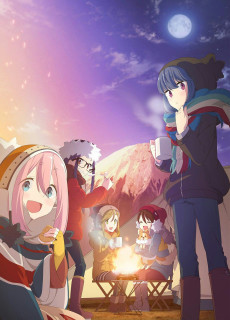 ANIME ComedyYuru Camp△
ANIME ComedyYuru Camp△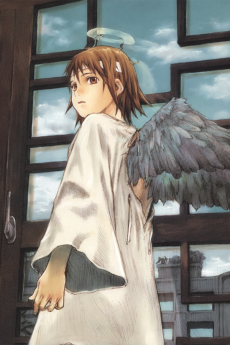 ANIME DramaHaibane Renmei
ANIME DramaHaibane Renmei ANIME HorrorGakkou Gurashi!
ANIME HorrorGakkou Gurashi!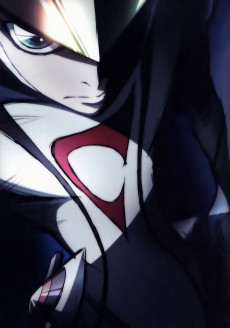 ANIME ActionCasshern Sins
ANIME ActionCasshern Sins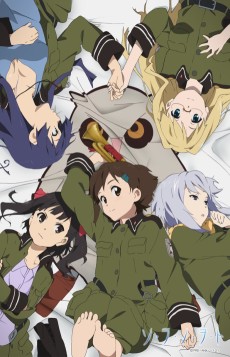 ANIME MusicSo Ra No Wo To
ANIME MusicSo Ra No Wo To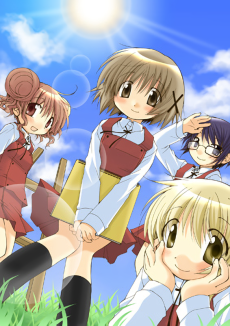 ANIME ComedyHidamari Sketch
ANIME ComedyHidamari Sketch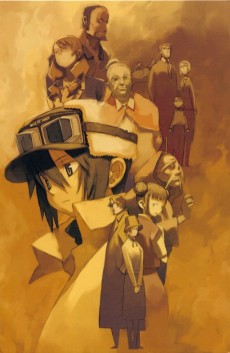 ANIME AdventureKino no Tabi: the Beautiful World
ANIME AdventureKino no Tabi: the Beautiful World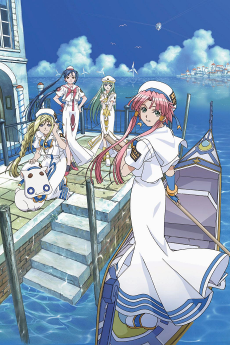 ANIME FantasyARIA The ANIMATION
ANIME FantasyARIA The ANIMATION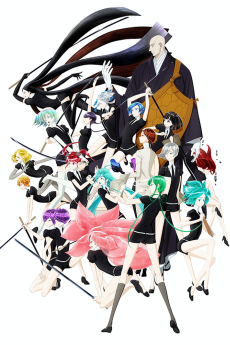 ANIME ActionHouseki no Kuni
ANIME ActionHouseki no Kuni
SCORE
- (4.05/5)
TRAILER
MORE INFO
Ended inDecember 22, 2017
Main Studio White Fox
Trending Level 3
Favorited by 4,968 Users
Hashtag #少女終末旅行



